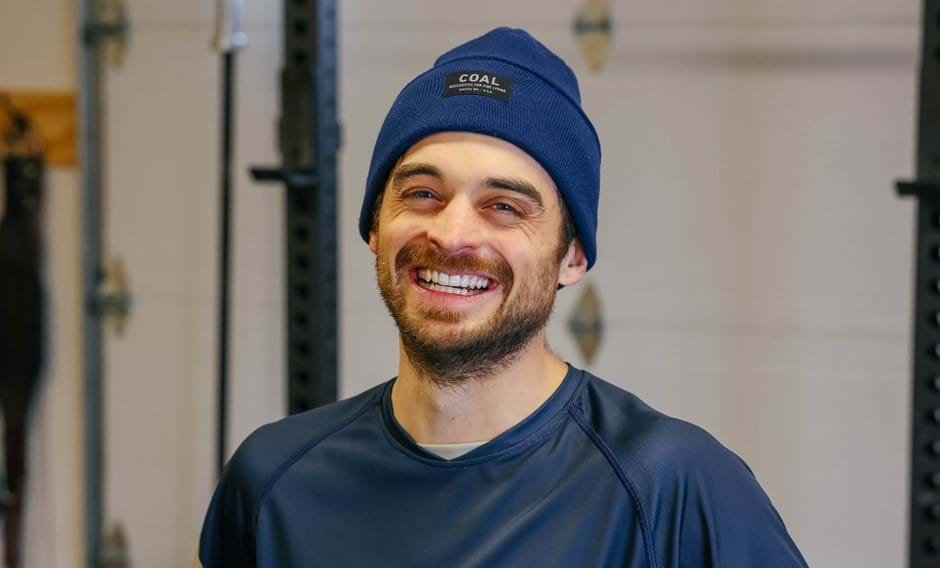ARTICLE
10 exercises to improve your riding during the off season
In preparation for your next cycling season, here's 10 exercises you should focus on according to Patrick Chartrand, Devinci ambassador, cycling coach and kinesiologist.
The first and perhaps most important reason is for your overall health and injury prevention. Cycling is an incredible sport, but being a repetitive sport and one in which our body position leads to muscle imbalances, it is important to do something other than cycling. Gaining range of motion in joints such as the hip, shoulders and knees can prevent many problems and visits to healthcare professionals. That's what self-massage and stretching are for! In addition, physical conditioning can be counted on to strengthen certain muscles that will help you maintain optimal posture and thus prevent riding-related pain (e.g., lower back, forearms, upper back, shoulders).
The second good reason is a gain in performance. With physical conditioning training, we have the potential to become stronger, faster, more enduring and more powerful. On the bike, this translates into a higher overall pace during our rides, the ability to take bigger hits, the stamina to maintain a higher pace throughout a long downhill or the power to sprint to the post-ride drinks even faster! Sounds great, doesn't it!
Last point to consider: it is important to remember that there is no magic exercise. An exercise becomes beneficial only if it is well executed and well prescribed. It is therefore important to refer to a professional to validate the proper execution of the suggested movements and to determine how to effectively integrate these exercises into your training program.
1. "Thruster" with knee and elastic band
Comprehensive in being potentially as much cardiovascular as muscular, this exercise is as interesting at the end of a warm-up as it is in the body of the session. The addition of an elastic band around the knees increases the activation of the glutes in external rotation at the leg; a perfect complement for those whose knees tend to go inward during a squat!

2. "Waiters bow" with elastic knee band
Enabling you to understand the self-growth and the unloading principles of the spine, this exercise is very useful for your posture in the gym as well as on the bike. The goal is to maintain the 4 precious contact points of the stick throughout the movement: the back of the head, the spine between our shoulder blades, our fingers touching the stick as well as our lower back and finally our iliac crest (top of our buttocks). To be integrated in your warm-up.
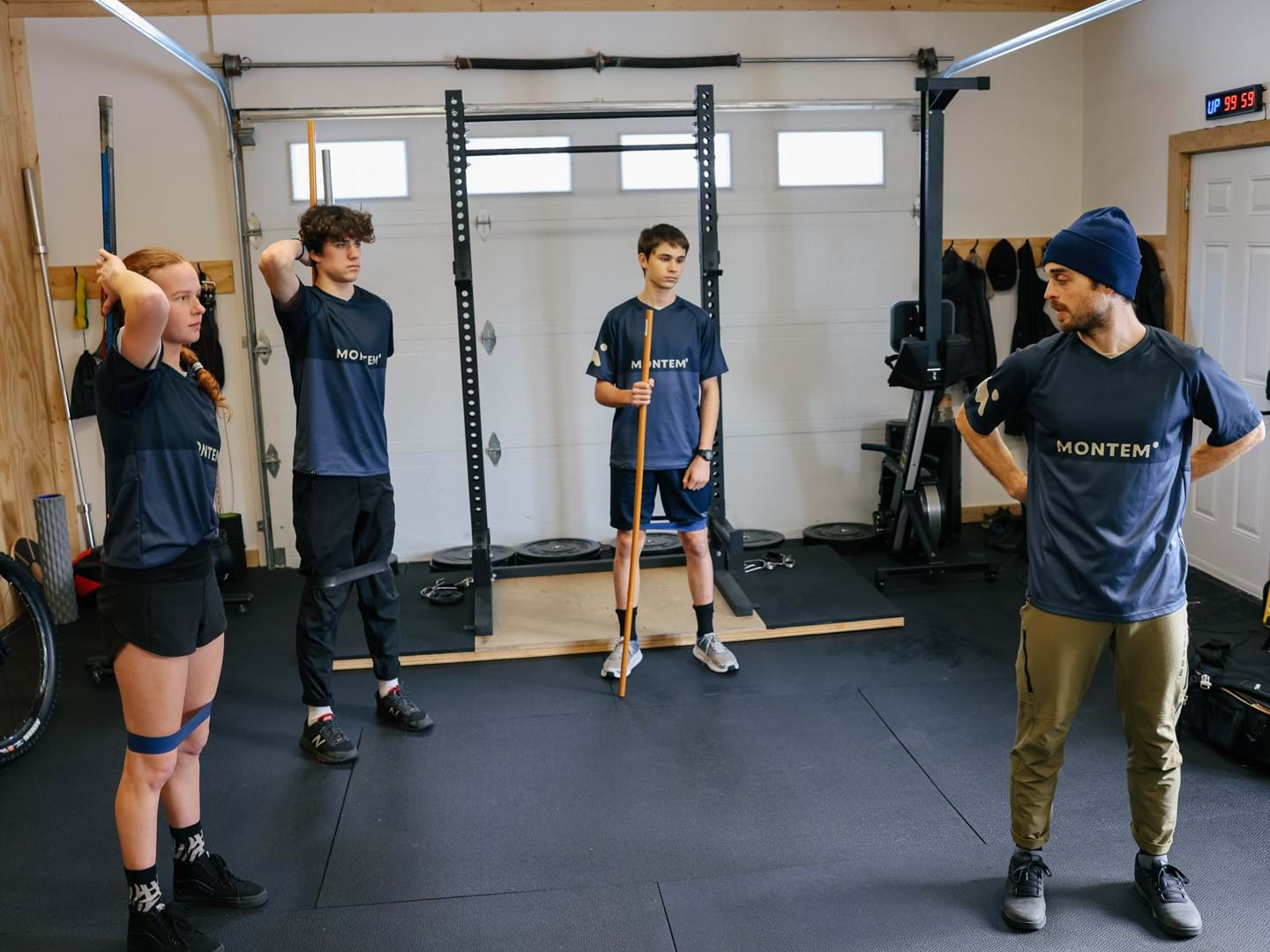
3. Tabata : 8 x 20 ON / 10 OFF. Mountain climber.
A popular training method, Tabata training allows you to optimize your cardiovascular gains. Go online and find a timer that is already programmed for a Tabata workout and you're done! Many exercises are suitable for this method such as rowing, stationary bike, thrusters, jumping rope and more! The periods of effort are done at high intensity and the rests of 10 seconds at a complete stop. Here, we chose the mountain climber for its complete demand on the lower body, upper body and even gainage.
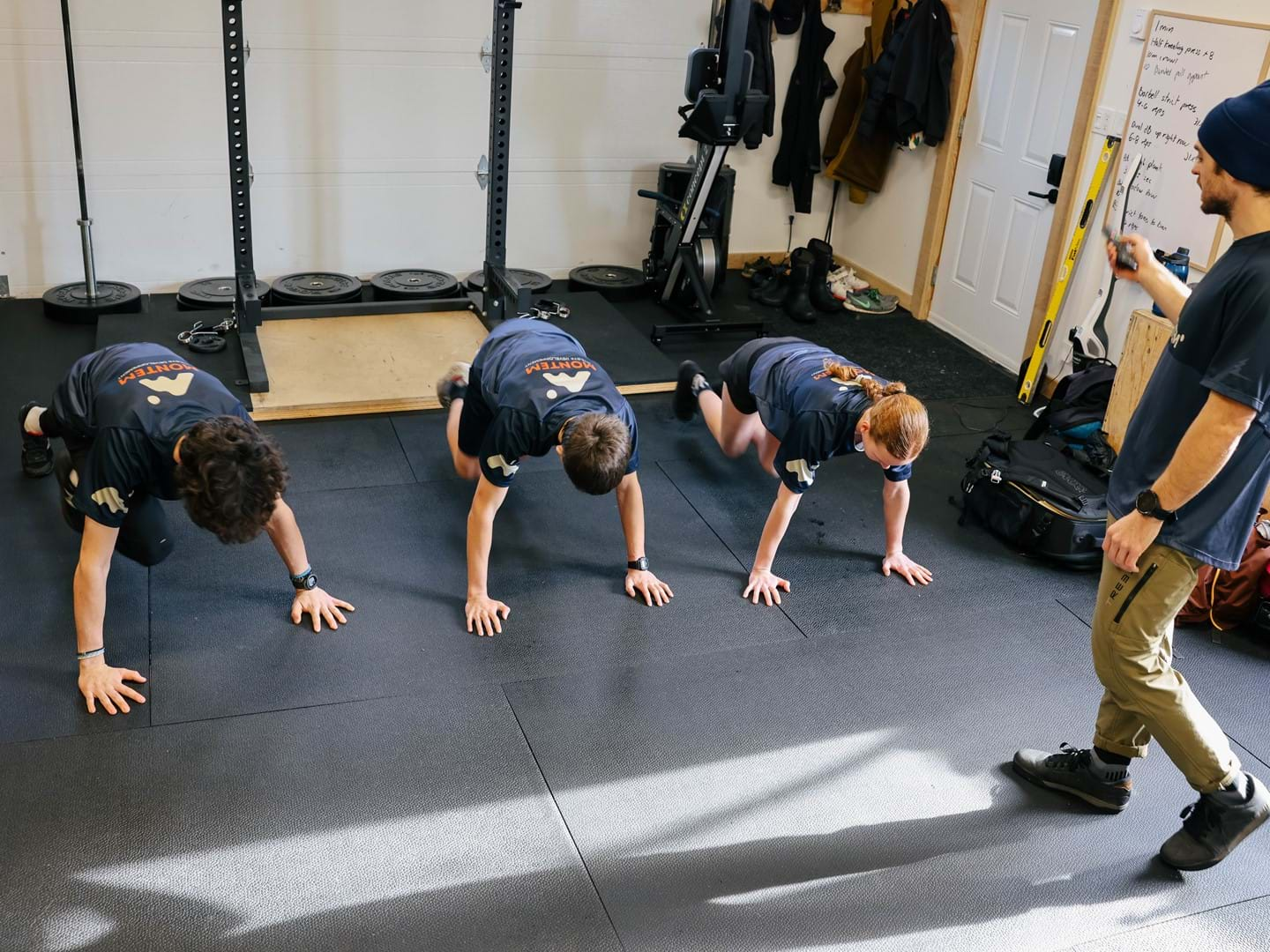

4. Deadlift with BB, DB, KB
A classic but effective exercise for strengthening the posterior chain including the lower back and hamstrings as well as developing your grip strength (aka the strength to hold your handlebar)! Can be done just as well with a rubber band, free weights, kettlebell or barbell. Start light so you can master the technique!
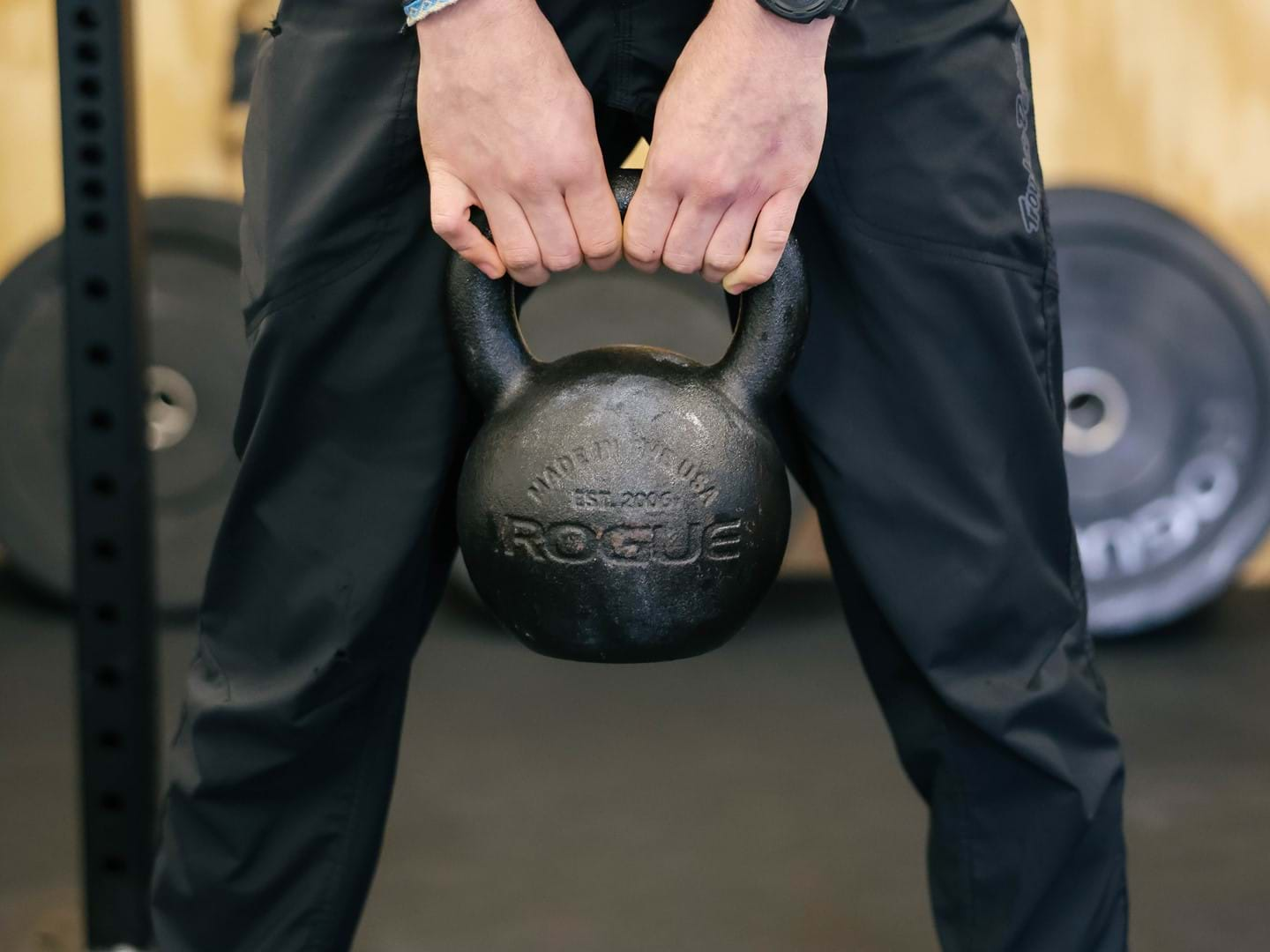
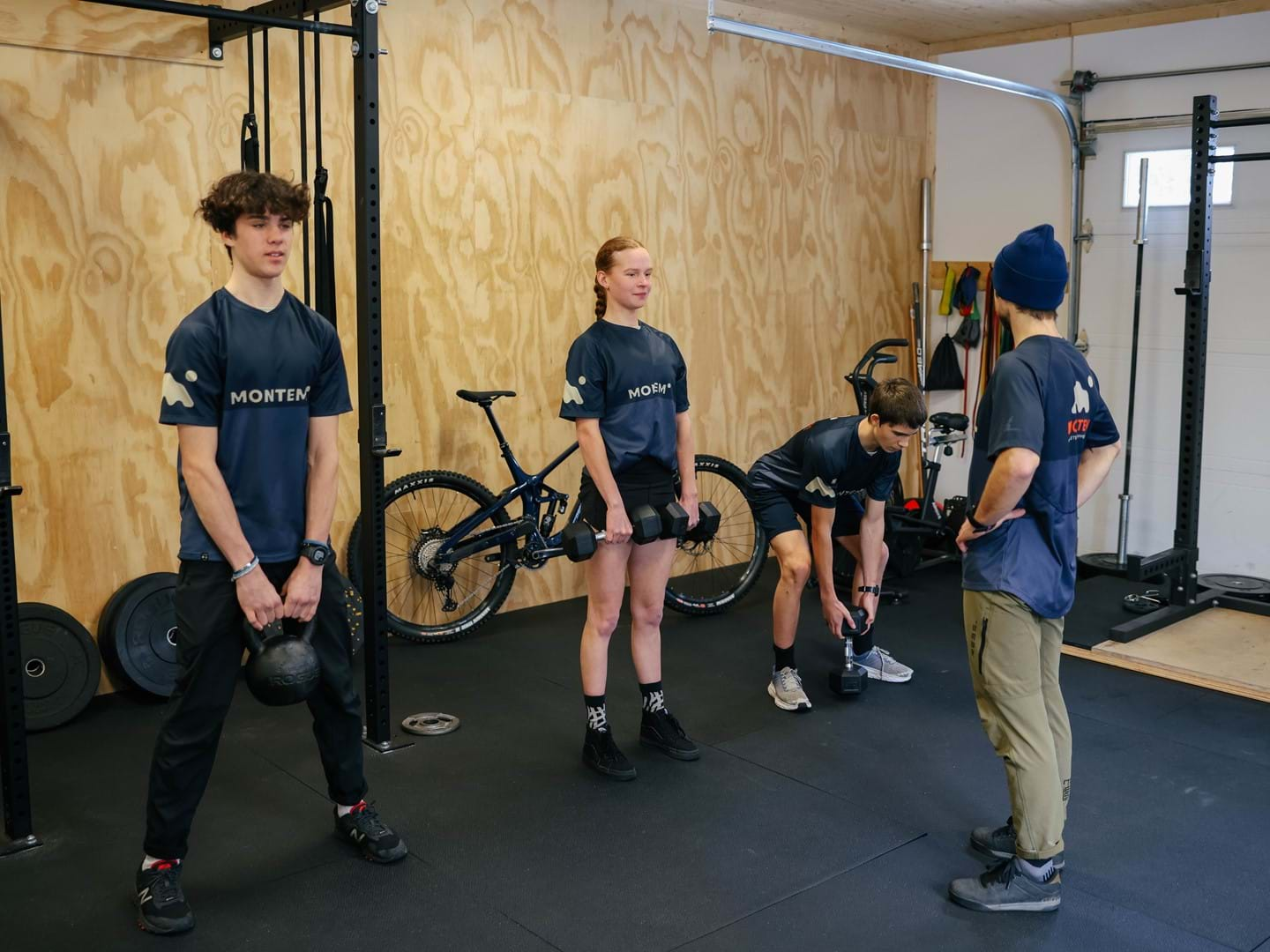
5. Push up + hop
Another classic but this time with a specific twist. Make sure you've done enough regular push ups before this variation to have the strength and endurance you need as well as a functional range of motion because in this proposed version, you develop power and a much smaller range of motion.
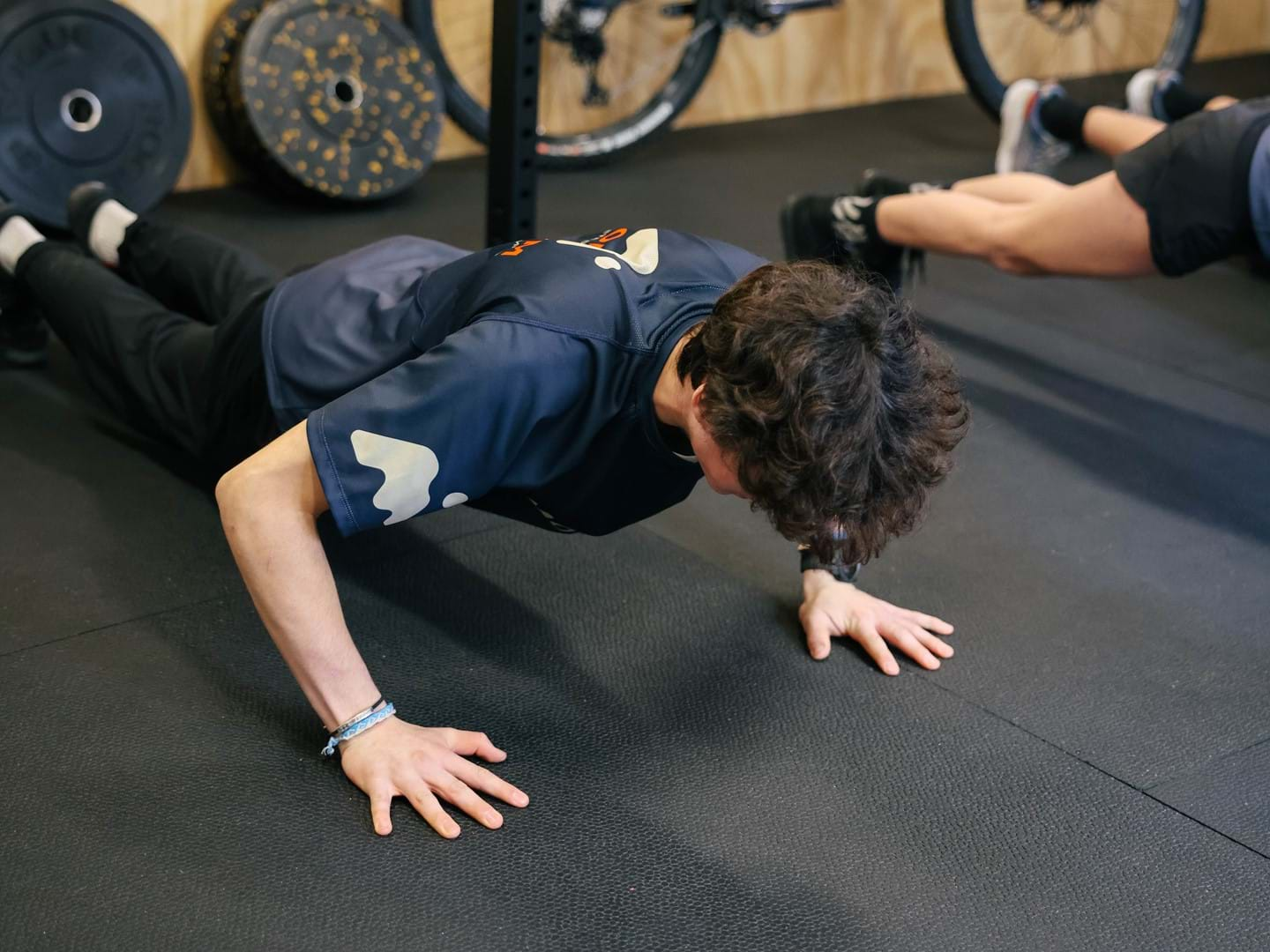
6. Vertical pull in the bent position
Being able to pull well on the handlebars is also very useful in mountain biking. That's what you'll develop in this exercise by promoting a pronated grip (palms down), a hand width similar to the one on your handlebars (outside your shoulders) and a body position similar to the one on your bike. All you have to do is pull the bar to your chest.
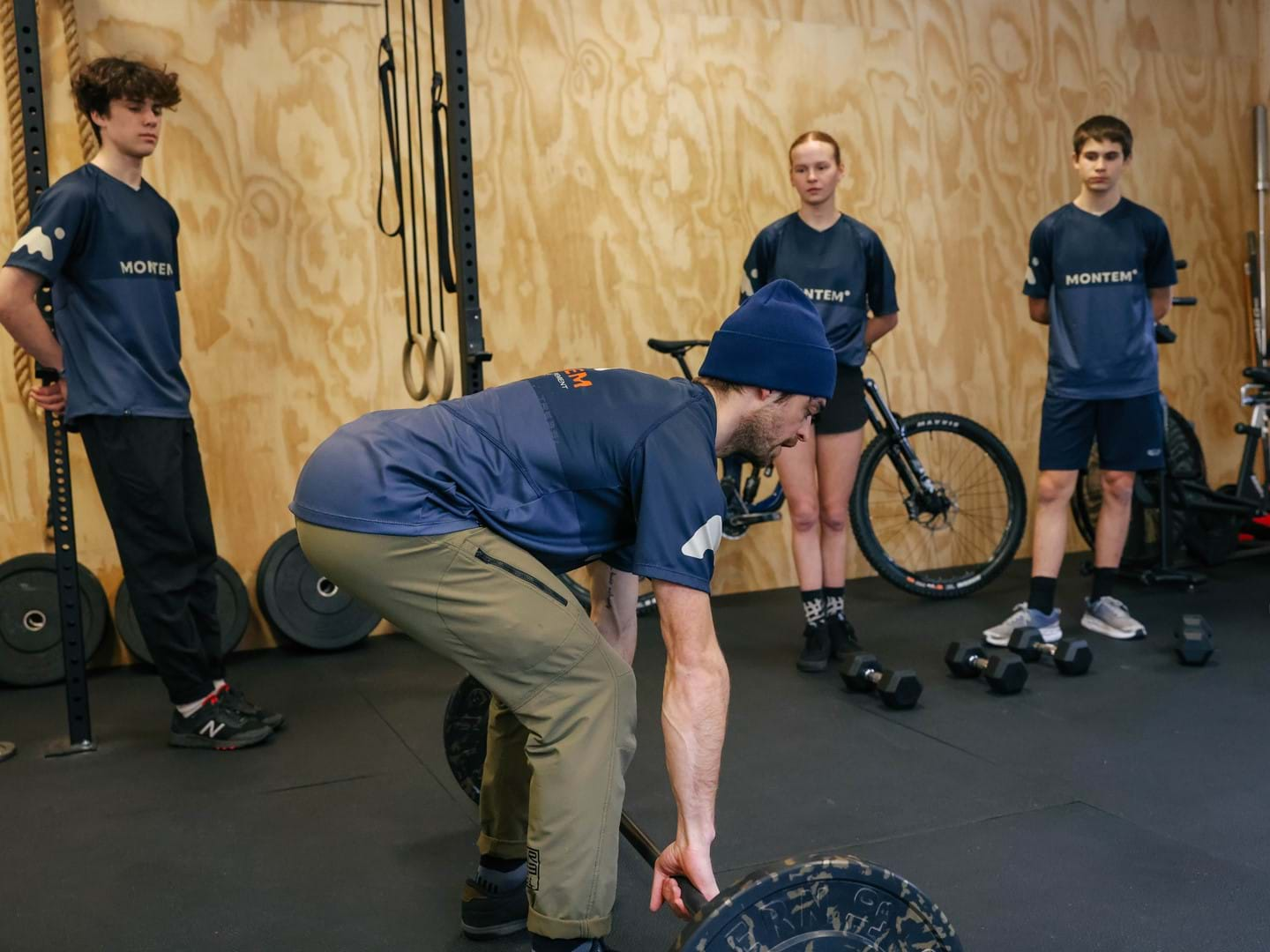
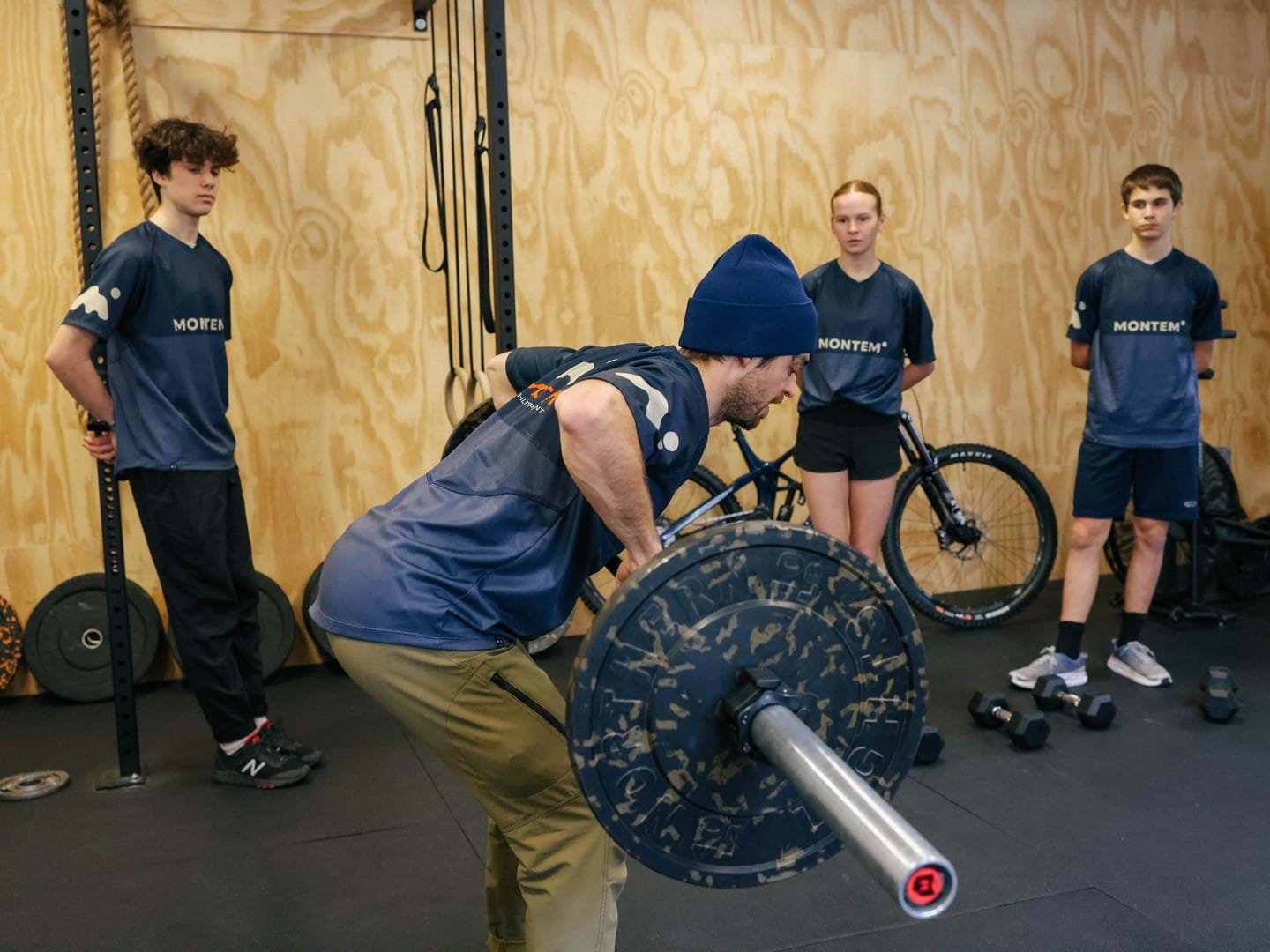
7. Anteversion-retroversion crunch
Looks simple and not that difficult, but if you do them the right way, after about 20 reps, you'll feel your abs burning! The key is to mobilize your pelvis in the movement. And be careful, this is not a sit-up, you will have your shoulder blades off the ground as much as possible. When your back is on the ground, have your pelvis in anteversion and when your shoulder blades are off the ground, change the position of your pelvis towards retroversion.
Prescription : 2 to 4 sets of 15 to 25 repetitions
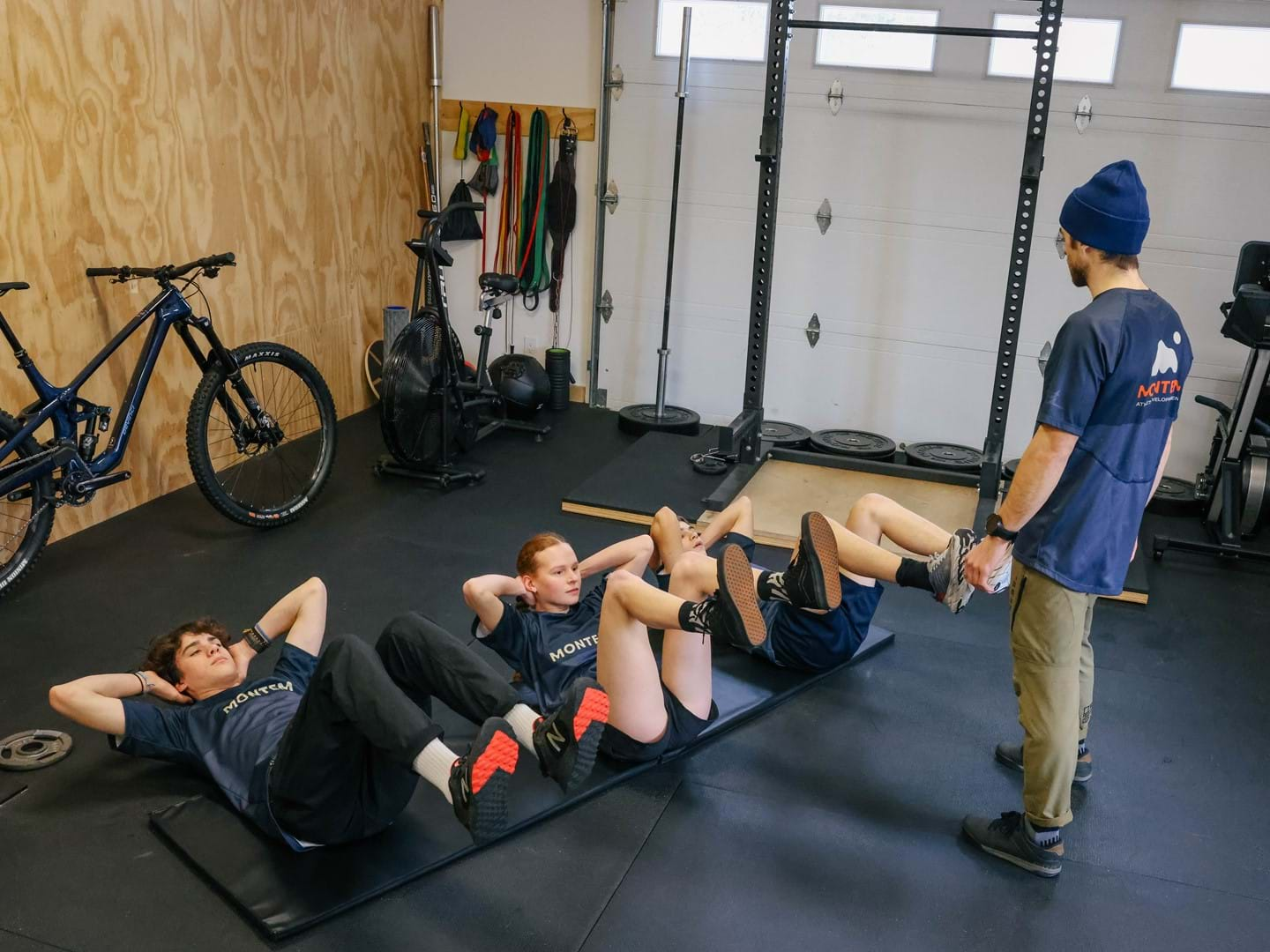
8. 30-30 Intervals.
2 to 4 sets of 6 to 10 intervals of 30 seconds of high intensity effort (Z5) with 30 seconds of active low intensity rest (Z2) between repetitions and 4 minutes of active low intensity rest (Z1) between sets. Alternate a low cadence set (60-75rpm) with a high cadence set (95-110rpm) to develop different pedaling techniques.
The 30-30 intervals are simple and effective. They help develop your maximum aerobic power. They help you climb a hill faster and better manage the cardiovascular demands of an enduro run. They work great on any type of stationary bike or cardio machine.
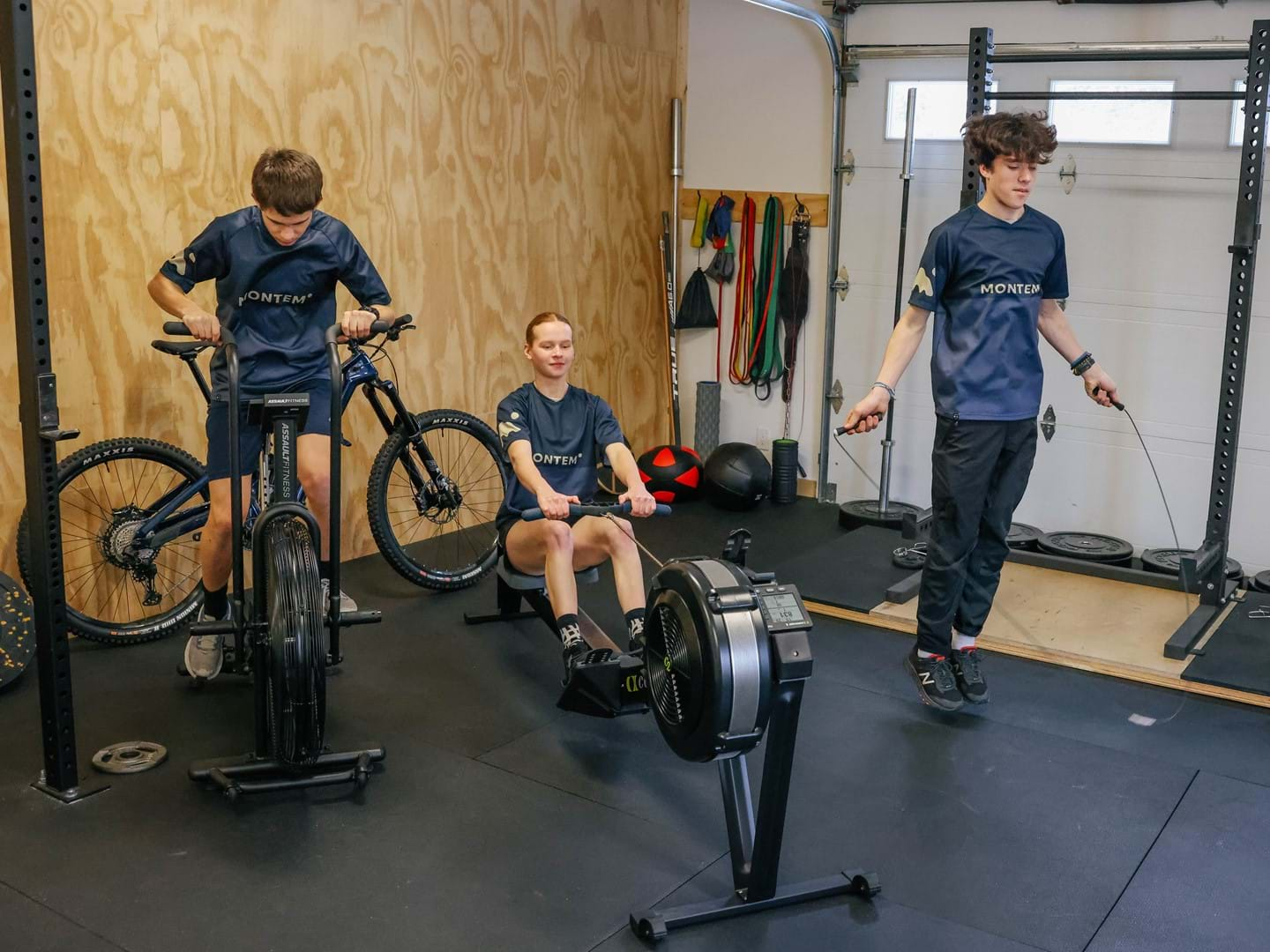
9. Foam roller. Iliotibial band (ITB) and tensor fasciae lata (TFL).
Besides the fact that saying these two words will make you sound like a true connoisseur of human anatomy, these exercises are very relevant to preventing overuse injuries due to repetitive motion of the pedal stroke. Self-massage should be as much a part of your training routine as stretching. To massage the band, point the roller at the side of your thigh (where the seam of your pants is). To target on the TFL, point to the pocket of your pants on the front and side of your hip.
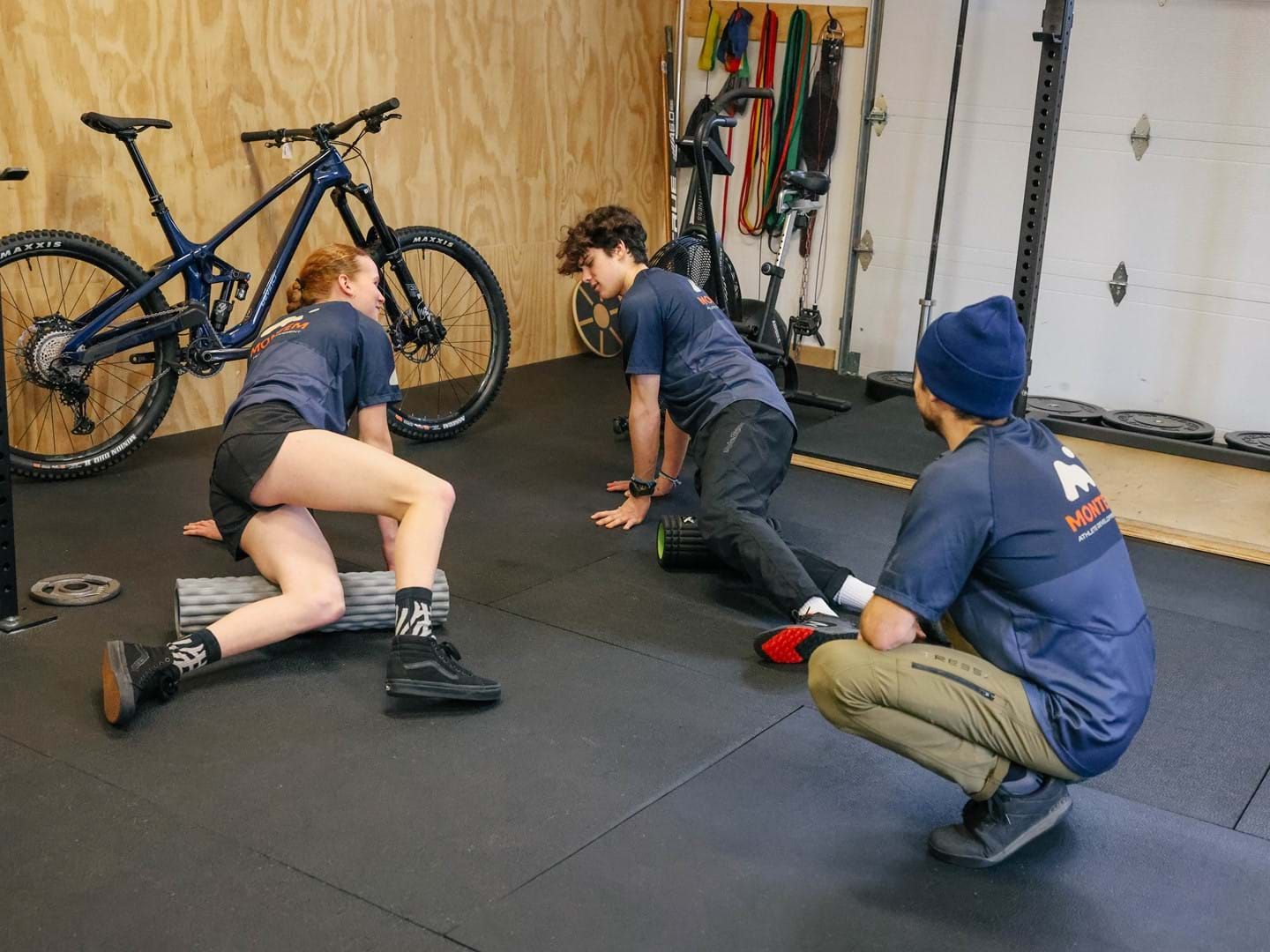
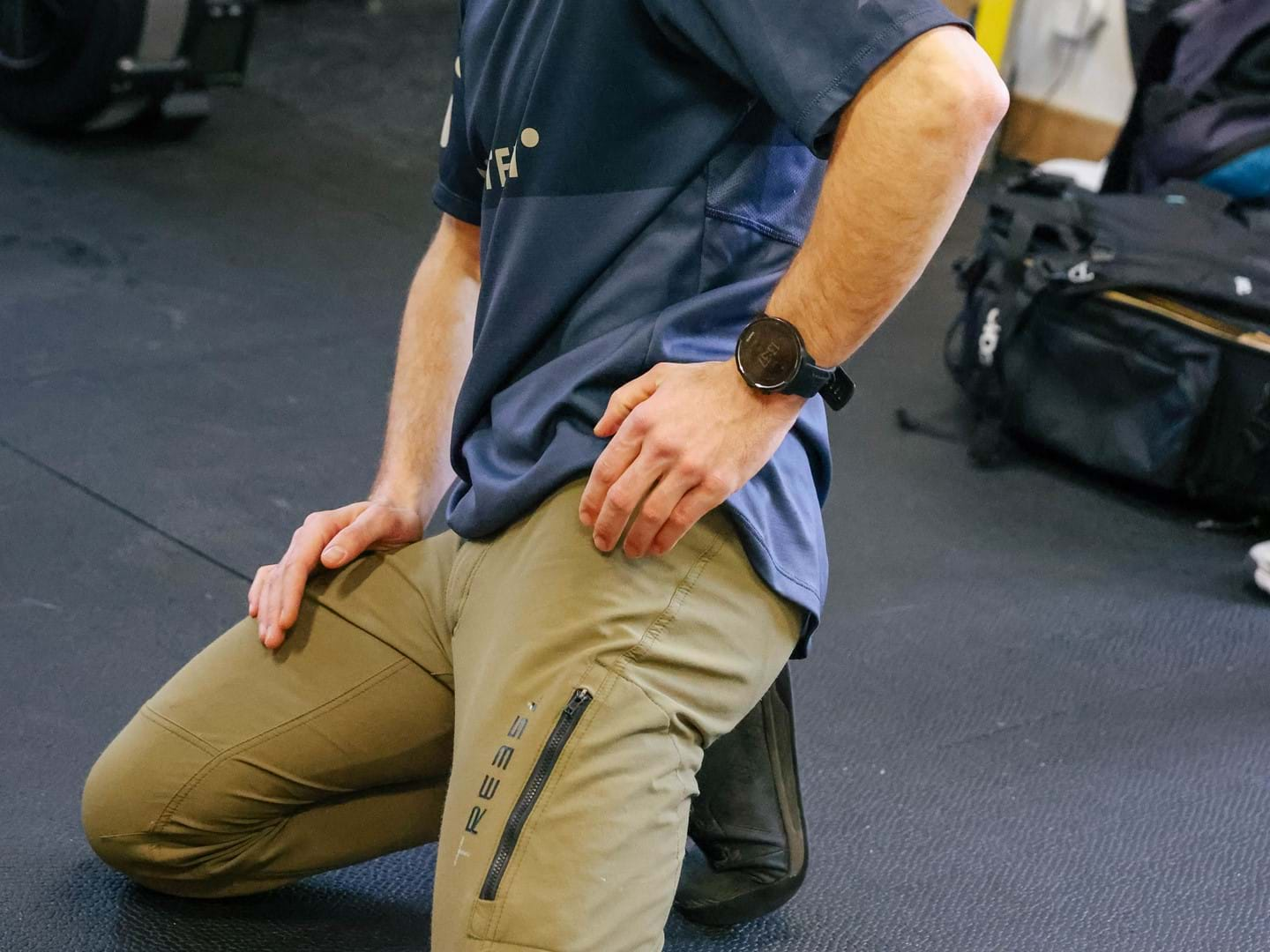
10. NPF Stretch. Glutes.
Another nice word to include in a discussion on physical conditioning: proprioceptive neuromuscular facilitation. A stretching method where we quickly see gains in range of motion thanks to its alternation between a period of voluntary contraction of the muscle being stretched followed by a period of relaxation. In this case, we target the gluteal muscles. During the voluntary contraction, we will try to bring our leg towards the outside by forcing against our arm. On release, we will use our arm to pull our knee a little more towards our opposite shoulder.
4 cycles of 3sec contraction / 2sec release per side
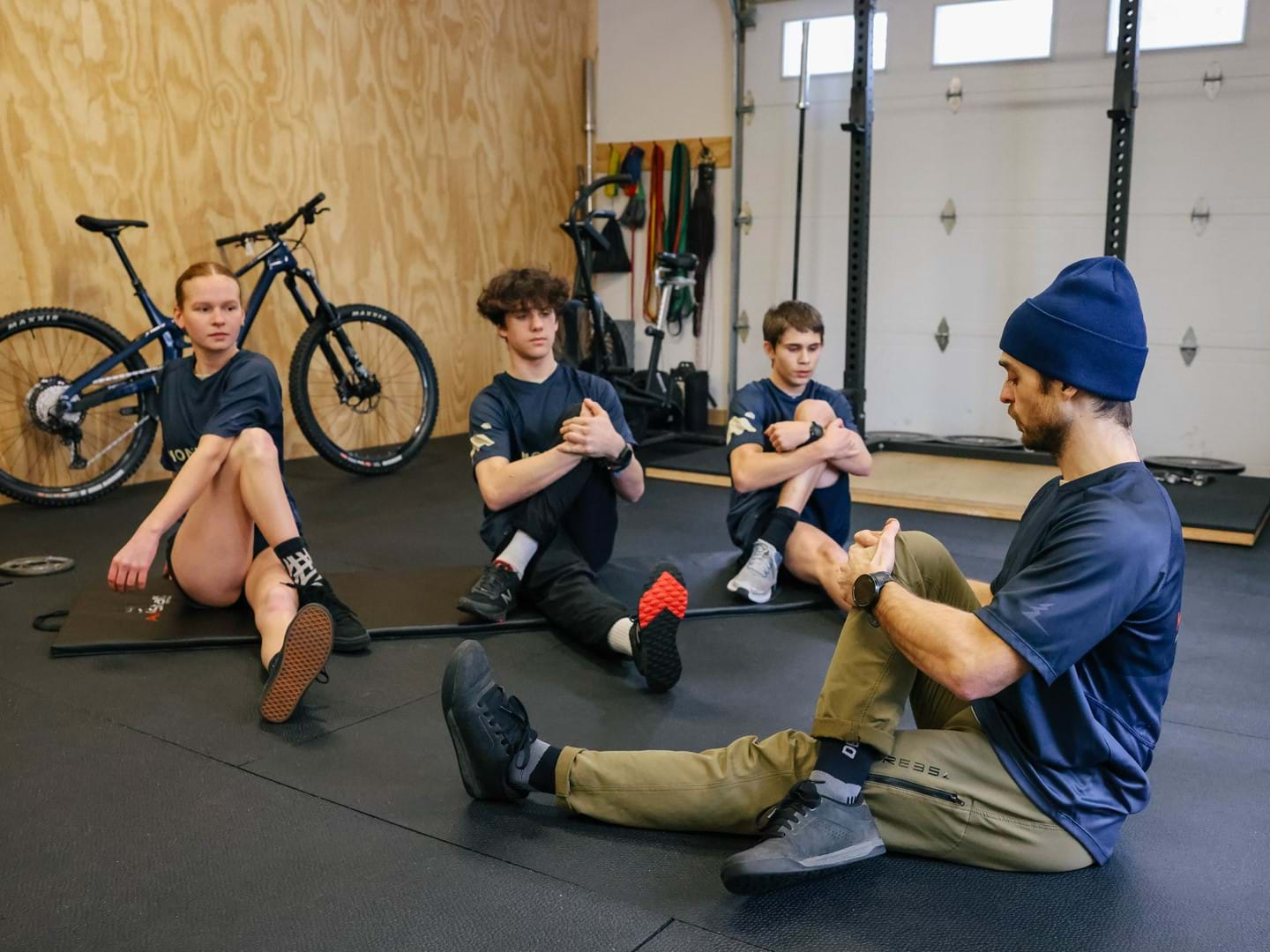
About MONTEM
Montem Athlete Development specializes in coaching mountain bikers who want to reach new heights.
Through its mission, vision and values, Montem seeks to make a difference for the athletes, the environment and the community.
We couldn't be more proud to support them in their mission and to count on Patrick as one of our brand ambassador!
